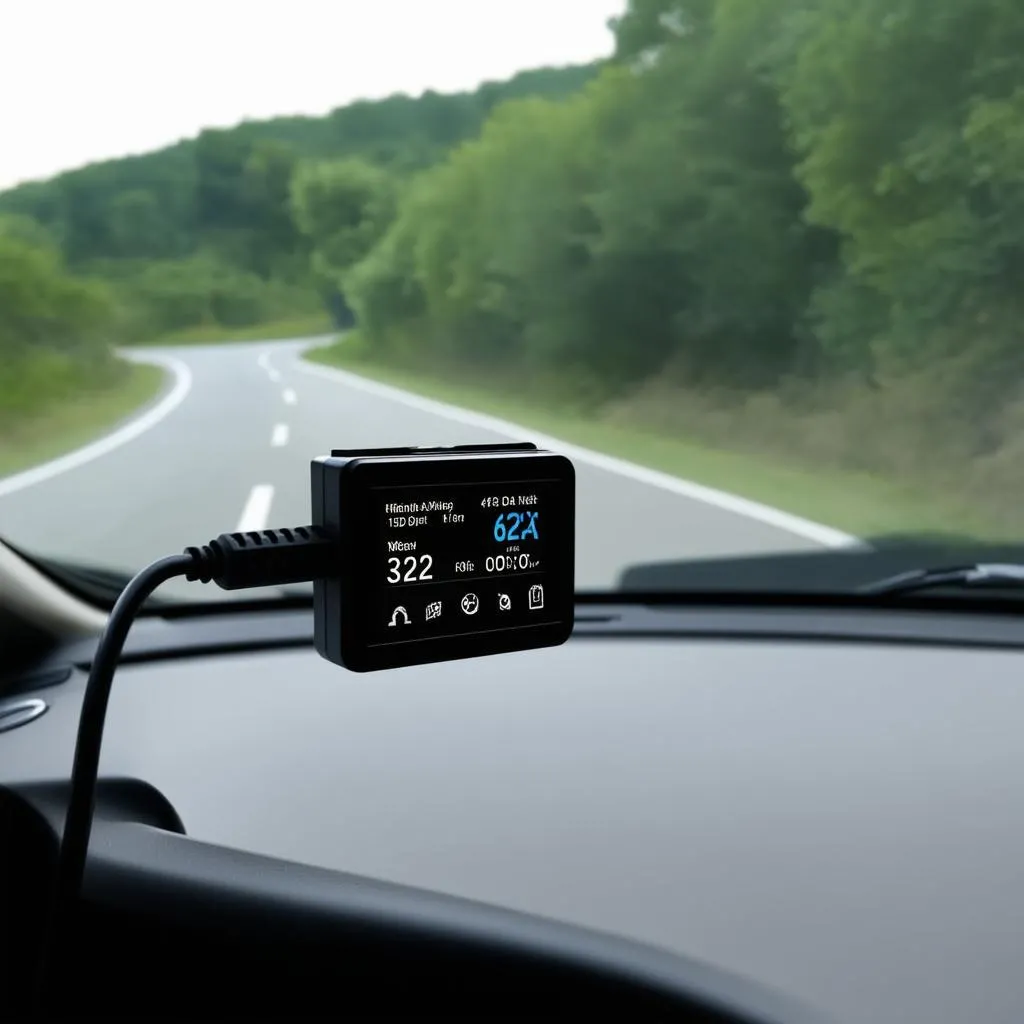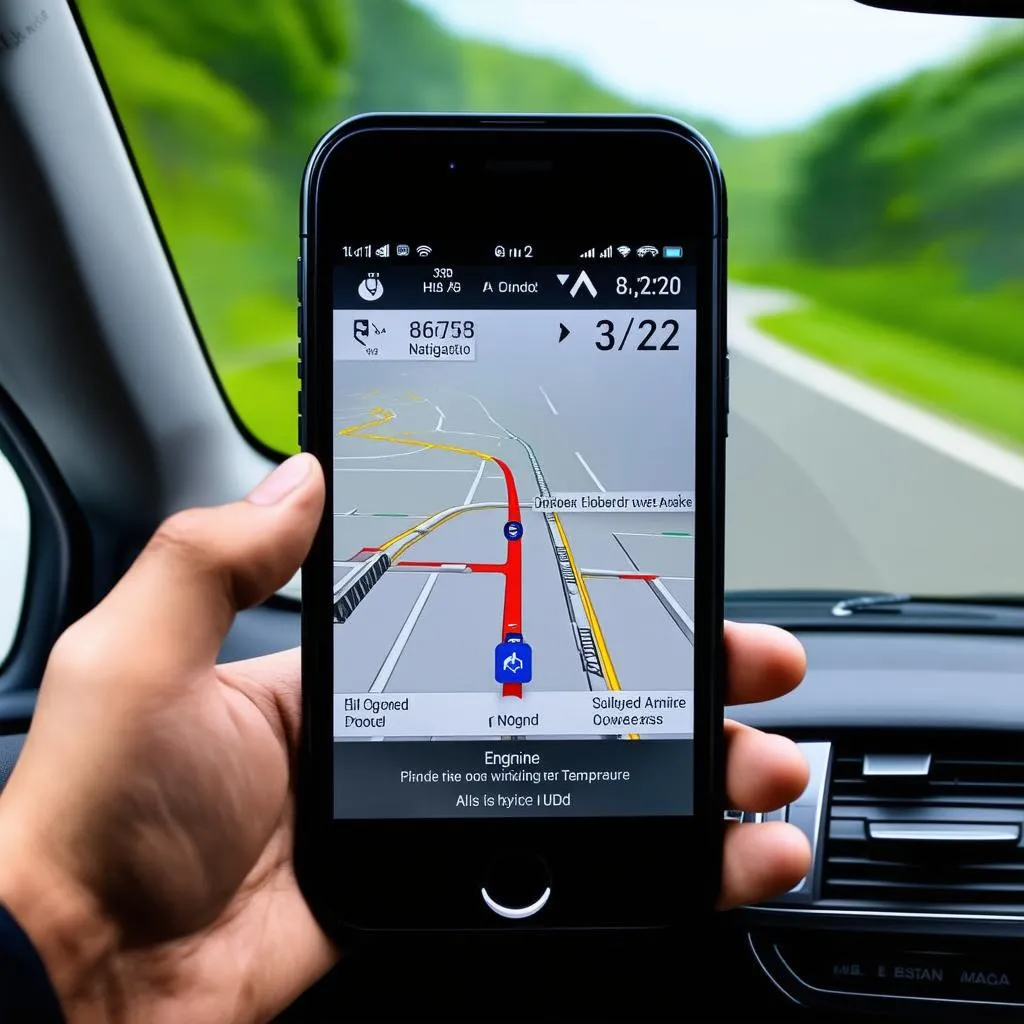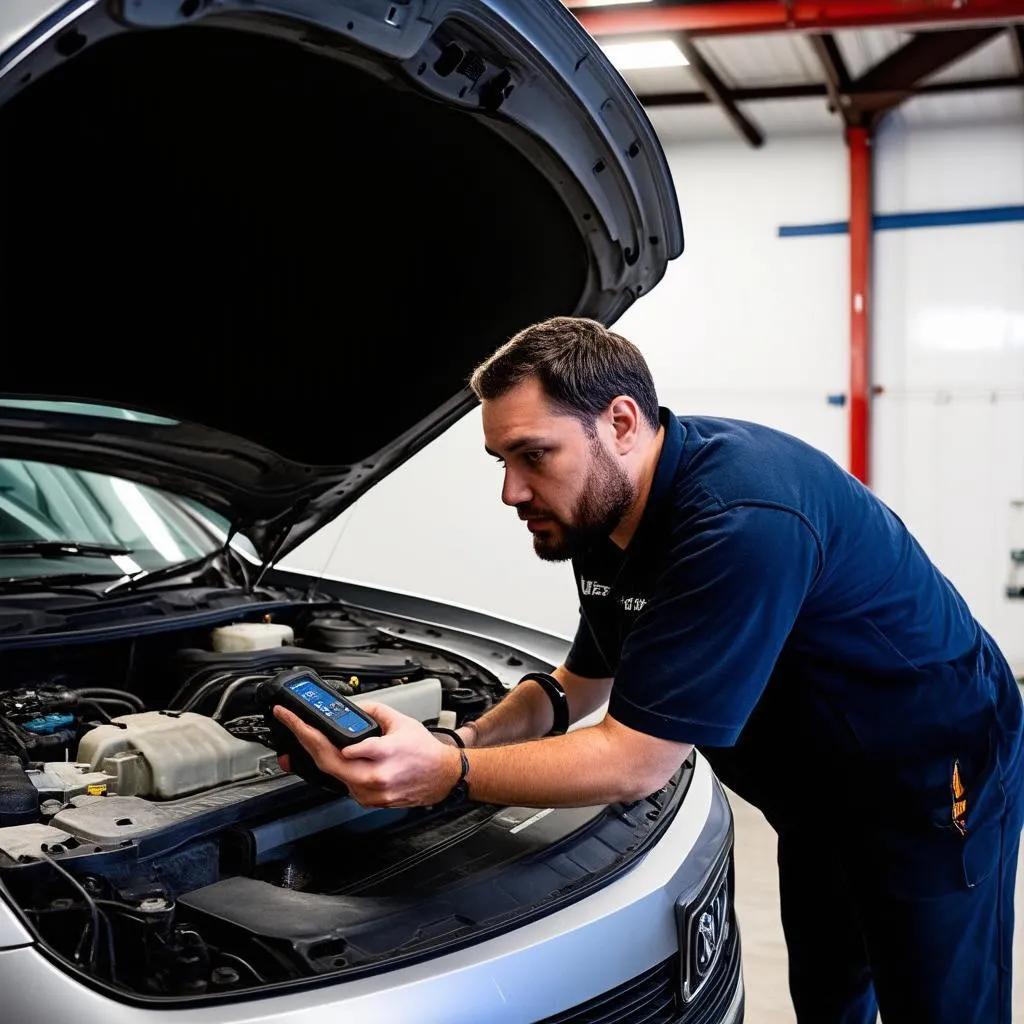Picture this: you’re cruising down the Pacific Coast Highway, California sunshine warming your face, the wind in your hair. You’re behind the wheel of your sleek Audi A4, enjoying the scenic drive. But there’s a catch – you’re constantly glancing down at your GPS navigation, breaking your immersion in the breathtaking views. What if you could keep your eyes on the road and have your navigation information projected right onto your windshield? That’s where the idea of heads-up navigation connected to the OBD II port comes in.
What Does “Heads Up Navigation Connected To Obd Ii Port” Even Mean?
Before we dive in, let’s break down this techy phrase.
- Heads-Up Navigation (HUD): Like something out of a sci-fi movie, HUD projects essential driving information like speed, navigation instructions, and even warnings directly onto your windshield or a small transparent display. It’s about keeping your eyes on the road, enhancing safety and driving experience.
- OBD II Port: This little port under your dashboard is the portal to your car’s computer system. It’s a treasure trove of data about your car’s performance, fuel efficiency, and potential issues.
So, the question becomes: can you tap into the OBD II port’s data stream to fuel a heads-up navigation system?
Unlocking the Potential: Can You Do It?
The short answer is yes, and no. It’s complicated.
Here’s the deal:
- Not Directly: Your OBD II port primarily speaks the language of engine diagnostics, not navigation. It doesn’t inherently provide the GPS coordinates or mapping data needed for a full-fledged navigation system.
- Indirectly, It’s a Go!: This is where things get interesting. You can use third-party devices that connect to your OBD II port and work in conjunction with your smartphone. These clever gadgets pull real-time vehicle data like speed and fuel consumption and overlay navigation instructions from your phone’s GPS apps onto a small HUD display.
 OBD HUD Device
OBD HUD Device
Why You Might Want an OBD II Connected HUD
- Enhanced Safety: No more looking down at your phone or infotainment screen – all the information you need is right in your line of sight.
- Real-Time Data Overlay: Imagine seeing your speed, fuel efficiency, and even engine warnings directly on your windshield, seamlessly integrated with navigation instructions.
- Cost-Effective HUD Solution: Dedicated, built-in HUD systems can be expensive. OBD II connected options often provide a more budget-friendly entry point to this technology.
Navigating the Options: What’s Out There?
A quick search online will reveal a variety of OBD II HUD devices, each with its own strengths and limitations.
- Standalone Devices: These units often feature a dedicated display screen that sits on your dashboard and projects information onto the windshield. They pull data from your OBD II port and can connect to your smartphone via Bluetooth for navigation and other features.
- Smartphone Apps & HUD Units: Some apps pair with dedicated HUD displays. You plug the HUD unit into your OBD II port, and it projects information from the app onto your windshield.
 OBD HUD App Interface
OBD HUD App Interface
A Word of Caution:
- Compatibility is Key: Ensure the device or app you choose is compatible with your car model (looking at you, European car owners!) and your smartphone’s operating system.
- Read Reviews: User reviews can provide valuable insights into the accuracy, reliability, and ease of use of different OBD II HUD solutions.
Beyond Navigation: The OBD II HUD Advantage
While primarily used for navigation, OBD II HUDs offer more than just turn-by-turn directions:
- Performance Monitoring: Keep an eye on your speed, RPM, engine temperature, and other vital signs.
- Fuel Efficiency Tracking: Monitor your fuel consumption in real-time and adjust your driving habits to save money at the pump.
- Diagnostic Trouble Codes (DTCs): Some advanced units can display DTCs, giving you a heads-up (pun intended) about potential car problems.
Frequently Asked Questions:
Q: Will an OBD II HUD drain my car battery?
A: Most OBD II devices are designed to be power-efficient and draw minimal power from your car battery. However, it’s always a good practice to unplug the device when your car is turned off for extended periods.
Q: Can I still use my car’s built-in infotainment system for music while using an OBD II HUD?
A: Absolutely! OBD II HUDs typically connect to your phone’s Bluetooth, leaving your car’s audio system free for music streaming or hands-free calling.
Q: Do OBD II HUDs work with all navigation apps?
A: Compatibility varies depending on the device and app. Popular navigation apps like Google Maps, Waze, and Apple Maps are generally supported. It’s always best to check the manufacturer’s specifications to confirm compatibility with your preferred apps.
Q: Are OBD II HUDs legal?
A: Laws regarding HUD usage can vary depending on your location. In general, as long as the HUD doesn’t obstruct your view of the road or distract you from driving safely, it’s likely to be permitted. Check your local regulations to be sure.
Looking for More Automotive Tech Insights?
Explore these related articles on our website:
Need Help with Your Car’s Tech?
Whether you’re in the bustling streets of New York City or cruising down Ocean Drive in Miami, getting your car’s tech to cooperate can be a challenge.
Contact our team of automotive experts via WhatsApp at +84767531508. We’re available 24/7 to provide assistance with diagnostics tools and answer your car tech questions.
 Mechanic Working on Car Diagnostics
Mechanic Working on Car Diagnostics
Drive Smarter, Safer, and More Connected
Heads-up navigation connected to your OBD II port might not be straight out of the box, but it’s a testament to how technology is changing the way we drive. By leveraging the power of your smartphone and the data from your car’s computer, you can enjoy a safer, more informed, and convenient driving experience. So, buckle up, keep your eyes on the road (with a little help from your HUD), and enjoy the ride!